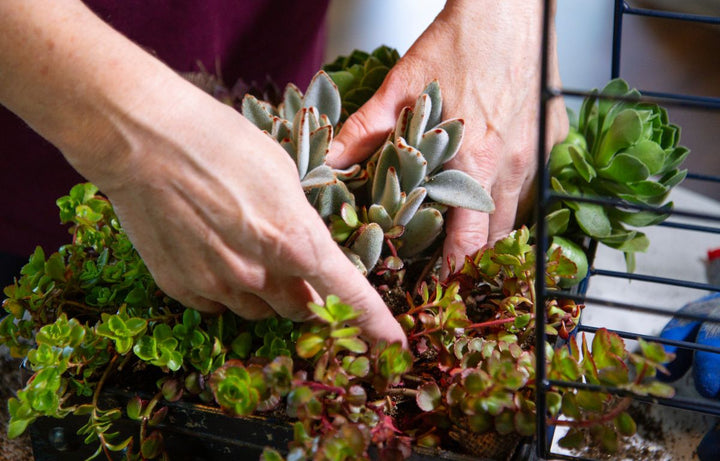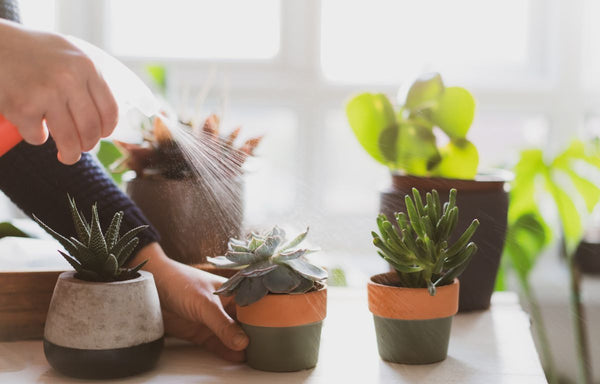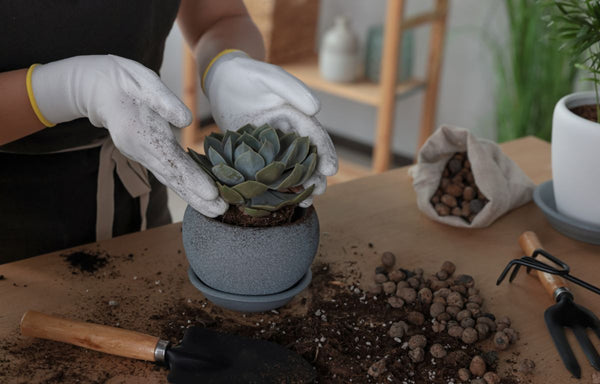
Succ-cessful Ways To Keep Your Succulent Plants Healthy And Thriving
Succ-cessful Ways To Keep Your Succulent Plants Healthy And Thriving
Although they are largely considered to be low-maintenance and easy-to-care-for plants, succulents do require a degree of care when they are unhappy. Here are some common problems that many gardeners experience, how to spot them and solutions to keep your little plant friend healthy and thriving.
Common Problems:
It is always better to catch these problems early so that they can be rectified and cured as soon as possible.- Overwatering
- Underwatering
- Poor drainage
- Improper sunlight exposure
- Incorrect potting soil
- Age and natural growth

Overwatering:
Overwatered succulents often have yellowing leaves, mushy stems, or a foul odour. The soil may also appear constantly damp. Overwatering can also increase the likelihood of fungal and bacterial infections which cause white furry dots, greasy grey or black splotches, and bumpy or scaly areas.
How to fix this:
- Allow the soil to dry out completely before watering again.
- Avoid watering the leaves and wipe the moisture away if it is not drying naturally.
- Ensure that the pot has proper drainage holes.
- Carefully remove the most infected leaves.
- Treat the whole plant with Neem Oil or an organic fungicide to stop the spread to other succulents.
Underwatering:
Succulents are naturally drought-tolerant and can withstand long periods without water as they store large quantities of moisture in their stems and leaves. However, they do eventually require water to survive. Underwatered succulents typically have shrivelled leaves, browning edges, and appear overall wilted or droopy. The soil will also be light-coloured and dry to the touch.
How to fix this:
- Water your succulent thoroughly, ensuring that the water reaches the roots.
- Check the moisture level of the soil regularly and adjust your watering frequency accordingly.
Poor drainage:
If water is not draining away from the soil properly, it can lead to root rot. Look for signs such as yellowing, unusually transparent or even black-spotted leaves, a foul smell from the soil, or blackened roots. The succulent may also be soft and mushy to the touch.
How to fix this:
- Re-pot your succulent in a well-draining soil mix.
- Ensure that the pot has sufficient drainage holes.
- Avoid using pots without drainage holes or pots with saucers that collect excess water and allow it to stagnate.
- Reduce the watering frequency and increase your monitoring for any changes.
- You may need to remove the infected sections to stop the rot from spreading.
Improper sunlight exposure:
Most succulents need ample sunlight to thrive. If they are not receiving enough light, they may become leggy, stretched, or pale in colour. Whereas beige patches or burn patches and closed foliage are indicators of too much sunlight. Succulents that are naturally translucent in colour require less sunlight and can burn more easily.
How to fix this:
- Place your succulent in a location where it can receive bright, indirect sunlight for 4-6 hours each day.
- Rotate the plant occasionally to ensure even exposure to sunlight.
- Regularly move your succulent to a brighter or shadier location as needed.

Incorrect potting soil:
Using the wrong type of soil can hold too much water and cause drainage issues. Look for soil that is specifically formulated for succulents or cacti that is also nutrient-rich. Succulents can become stunted and dull in colour if they are not getting enough food from the soil.
How to fix this:
- Re-pot your succulent using a well-draining soil mix specifically formulated for succulents or cacti that has a loose, rocky consistency with a good percentage of perlite or equivalent substitution for aeration and water retention.
- Avoid using regular potting soil, which retains too much moisture.
- Fertilise your succulent around once a month to replace nutrients absorbed by the plant or drained away.
Age and natural growth:
It is perfectly natural for the older leaves of your succulent to die back as the plant ages and is usually seen around the base or outside leaves of the plant. Succulents do this to divert energy into forming new growth and increase size. Ageing leaves will turn brown or red in colour, dry up and drop off.
How to fix this:
- Carefully remove the dead leaves to prevent bacteria and pests from feeding on them as they break down.
- Removing the dried leaves also allows good airflow around the stem of the plant and assists in drying out the soil in between watering.
By following these tips, you can successfully care for their succulent plants and enjoy their beauty for years to come!
Check out this blog on how to create a succulent bowl!
